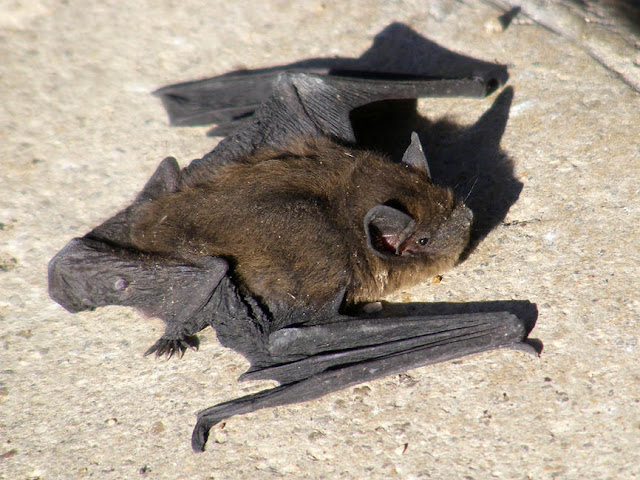Bats are all protected species in France, and where possible, closely monitored by specialist licenced biodiversity surveyors. The Chateau of Chambord recently had its winter bat survey done by a conservation team from Beauval Zoo. They used an endoscope to get into the most inaccessible cracks, and they had to be very careful with their torches, as some species are extremely sensitive to light. They needed to be quick too, not just so as to disturb them as little as possible, but also because the site is huge, with over a hundred rooms, and the scientists only have a day to complete their survey. Adding to the complications, some of the rooms are open to the public and full of precious objects, which might, nevertheless, conceal bats. It all has to be carefully surveyed, especially things like the folds in curtains.
The bats are found hidden in tiny gaps in walls and between the walls and wooden mouldings such as door frames. They are guarding their energy reserves, in a state of torpor away from the noise and the light, and awaiting their re-emergence in the spring.
Most of the individual bats are pipistrelles, but there are horseshoe bats too, as well as a few other species. The Chateau de Chambord is the most important hibernation site for pipistrelles in Centre Val de Loire. In one tower, more than 50 individuals, behind one door frame at least 30... The chapel has the largest concentration of pipistrelles, with about 200 hidden in the space. The room is not heated, but sheltered from the wind and not drafty, with access from the exterior through cracks -- perfect for little bats. In winter the chapel door is kept closed at all times, to stop the bats being disturbed, except once for the survey.
The curators are very aware of the bats needs and have adapted their displays to provide a suitable environment. The main thing to avoid is having upward shining lights. The other thing is to make sure there are no heaters near a fissure where the bats are sheltering. There are plenty of spaces which are not open to tourists or used for objects in the collection, and the ideal is to encourage the bats to use these spaces rather than the rooms containing precious works of art.
Every year an analysis of the population is written up, and changes noted. There are now ten years of records, taken twice a year, in winter and summer. This year's winter survey revealed 900 bats, twice the numbers of last year.
Ordinary tourists will never see these bats as they are tucked away, not moving a muscle, in places you will never see without the right equipment.
Note: The bat photos (both pipistrelles) were taken by me in the Sud Touraine, not at Chambord, and I was not involved with the Chambord survey, although I have surveyed bats in the Sud Touraine.
If you want to watch the bat surveyors in action they have released a video on YouTube [link].






2 comments:
Are you sure that they are not Lego Bats in fur suits?
Potty: Haha! Wrong chateau, but if it had been Cheverny one would have had to ask...
Post a Comment